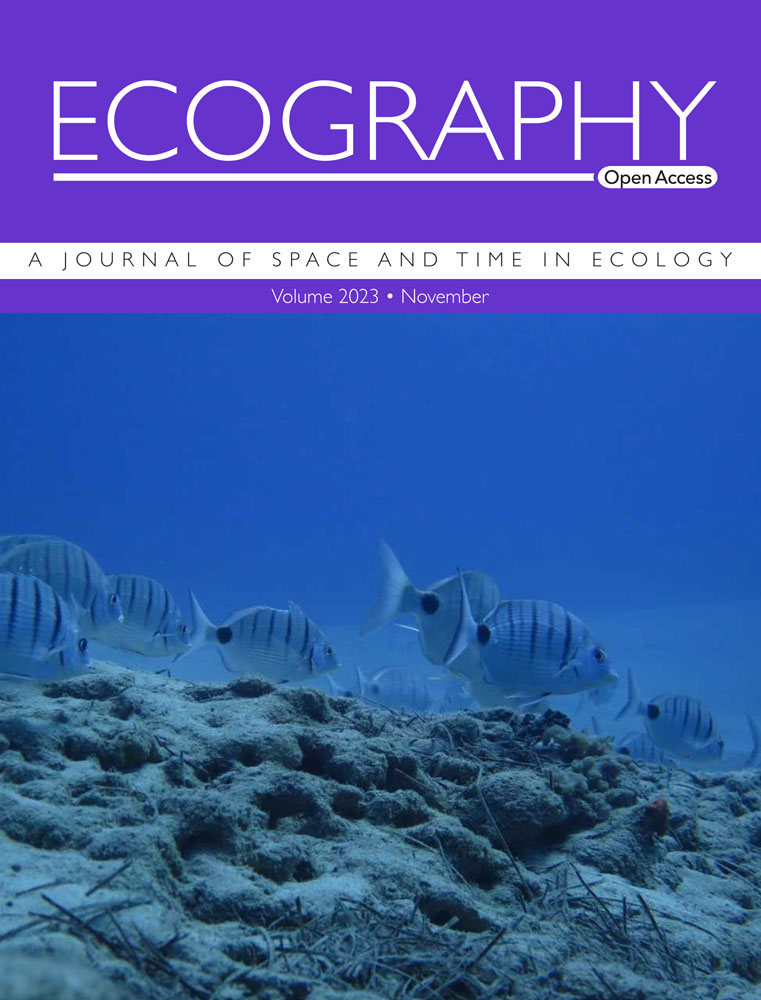Scalogram habitat measures as predictors of bird abundance
IF 5.4
1区 环境科学与生态学
Q1 BIODIVERSITY CONSERVATION
引用次数: 0
Abstract
Birds select habitat characteristics, such as variability in habitat structure, across multiple spatial scales (grain and extent). Measuring habitat variability at multiple scales can better capture factors that influence avifauna communities than focusing on one scale only. One valuable tool in assessing habitat heterogeneity is the cumulative dynamic habitat index (DHI), which is derived from satellite data and captures temporal variability in vegetation productivity. Our goals were to develop new habitat measures from the cumulative DHI at multiple scales based on scalograms, and to test their performance in models of bird abundance. We counted birds at 188 plots during three breeding seasons (2007–2009) at Fort McCoy military installation, USA, to assess the abundance of forest (ovenbird), shrubland (indigo bunting), and grassland (grasshopper sparrow尺度图栖息地测量作为鸟类丰度的预测指标
鸟类选择栖息地特征,如栖息地结构的变异性,跨越多个空间尺度(粒度和范围)。在多个尺度上测量栖息地变异性比只关注一个尺度能更好地捕捉影响鸟类群落的因素。评估生境异质性的一个有价值的工具是累积动态生境指数(DHI),该指数来源于卫星数据并捕捉植被生产力的时间变化。我们的目标是基于尺度图从累积DHI发展出新的栖息地测量方法,并在鸟类丰度模型中测试它们的性能。我们在美国Fort McCoy军事基地的三个繁殖季节(2007-2009年)对188个样地的鸟类进行了统计,以评估森林(烤鸟)、灌木(靛蓝狩猎)和草地(蚱蜢麻雀)鸟类专家的丰度。然后,我们基于PlanetScope(3米)、Sentinel‐2(10米)、Landsat‐8(30米)和MODIS(250米)数据计算NDVI,以量化累积DHI。我们总结了每次鸟类调查中多个范围内的平均NDVI累积DHI,并开发了11个新的栖息地测量方法来测试它们在鸟类丰度模型中的预测能力。我们发现累积DHI在不同程度上分别与烤鸟和靛蓝猎鸟(森林和灌木专科)的丰度呈正相关;与草地专家蚱蜢麻雀呈负相关。在包含单粒和多粒预测因子的多元线性回归模型中,尺度图栖息地测量解释了鸟类丰度的中高变异性,森林、灌丛和草地专家的R2分别为0.77、0.37和0.75。我们的研究结果表明,尺度图是捕获多尺度生境配置的有效工具,因为它们捕获了森林、灌丛和草地生境条件的变异性。我们开发的尺度图栖息地测量可以使用我们的新R包“尺度图”来计算。
本文章由计算机程序翻译,如有差异,请以英文原文为准。
求助全文
约1分钟内获得全文
求助全文
来源期刊

Ecography
环境科学-生态学
CiteScore
11.60
自引率
3.40%
发文量
122
审稿时长
8-16 weeks
期刊介绍:
ECOGRAPHY publishes exciting, novel, and important articles that significantly advance understanding of ecological or biodiversity patterns in space or time. Papers focusing on conservation or restoration are welcomed, provided they are anchored in ecological theory and convey a general message that goes beyond a single case study. We encourage papers that seek advancing the field through the development and testing of theory or methodology, or by proposing new tools for analysis or interpretation of ecological phenomena. Manuscripts are expected to address general principles in ecology, though they may do so using a specific model system if they adequately frame the problem relative to a generalized ecological question or problem.
Purely descriptive papers are considered only if breaking new ground and/or describing patterns seldom explored. Studies focused on a single species or single location are generally discouraged unless they make a significant contribution to advancing general theory or understanding of biodiversity patterns and processes. Manuscripts merely confirming or marginally extending results of previous work are unlikely to be considered in Ecography.
Papers are judged by virtue of their originality, appeal to general interest, and their contribution to new developments in studies of spatial and temporal ecological patterns. There are no biases with regard to taxon, biome, or biogeographical area.
 求助内容:
求助内容: 应助结果提醒方式:
应助结果提醒方式:


